Your support helps us to tell the story
From reproductive rights to climate change to Big Tech, The Independent is on the ground when the story is developing. Whether it's investigating the financials of Elon Musk's pro-Trump PAC or producing our latest documentary, 'The A Word', which shines a light on the American women fighting for reproductive rights, we know how important it is to parse out the facts from the messaging.
At such a critical moment in US history, we need reporters on the ground. Your donation allows us to keep sending journalists to speak to both sides of the story.
The Independent is trusted by Americans across the entire political spectrum. And unlike many other quality news outlets, we choose not to lock Americans out of our reporting and analysis with paywalls. We believe quality journalism should be available to everyone, paid for by those who can afford it.
Your support makes all the difference.Hay fever sufferers across much of England and Wales are facing a difficult week with grass pollen levels increasing due to the warm, dry weather.
The Met Office issued alerts for high levels of pollen in four regions of the UK on Monday. But on Tuesday and Wednesday, all of England and Wales, apart from North East England, will come under the “high level” warning, according to the body.
It says the pollen count is rising due to the warmer weather after a period of rainfall, in a shift described by some as the detonation of a “pollen bomb”, with a potential 10 million hay fever suffers to experience the effects.
The Worcester University-based Pollen Services and Research group has also warned that the count will rise to “very high” this week, with the country now entering “peak season”.

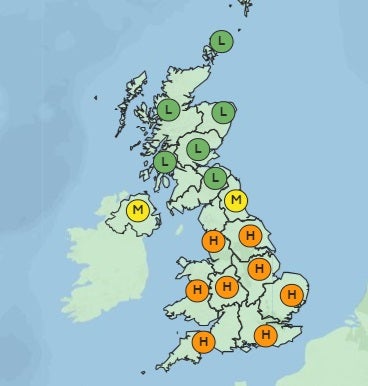
The discomfort for hay fever suffers comes from the grass pollen, with those impacted experiencing sneezing, itchy eyes, mouth and throat and blocked noses. Less common symptoms include headaches and hives.
The pollen count is the number of particles per cubic metre of air, with a reading of between 50 and 150 grains of grass pollen considered high.
On Monday, London and South West England, Wales, West Midlands and Yorkshire and Humber is seeing high counts, with the rest of England and Northern Ireland seeing medium counts.
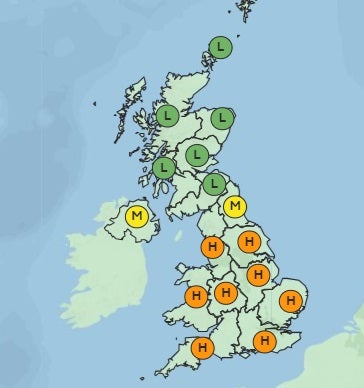
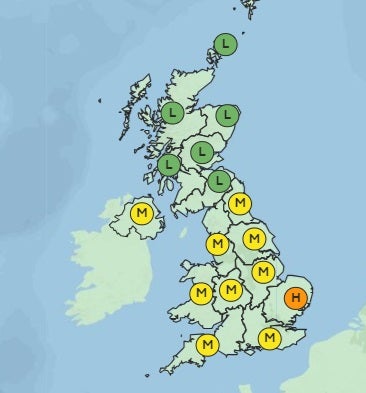
Throughout the week, Scotland will see a low pollen count.
On Tuesday, all of England and Wales, apart from North East England, will have a high pollen count. North East England and Northern Ireland will have a medium pollen count.
It will ease slightly on Thursday, when just the east of England will have a high pollen count. Everywhere else, apart from Scotland, will have a medium count.
And on Friday, all of England, Wales and Northern Ireland will have a medium pollen count.
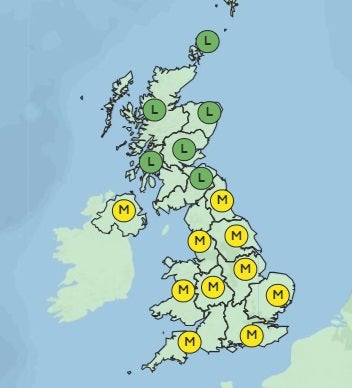
In a statement, the Met Office said: “Following a relatively mild winter and some more recent fine, warm weather we’ve had the perfect weather conditions for pollen production and release.
“If you’re one of the many millions of hay fever sufferers across the UK, the coming of spring can signal the unwelcome return of your symptoms.”
It added that while it is “very difficult” to avoid exposure to pollen, hay fever sufferers can put Vaseline around their nostrils to stop the pollen from entering, or wear wraparound sunglasses to stop it getting in their eyes.
Sufferers can also shower and change their clothes after they have been outside while keeping windows and doors shut.
They are advised not to cut or walk on grass, or spend too much time outside.
Hay fever can last for weeks or months, and impacts one in four adults and one in 10 children.
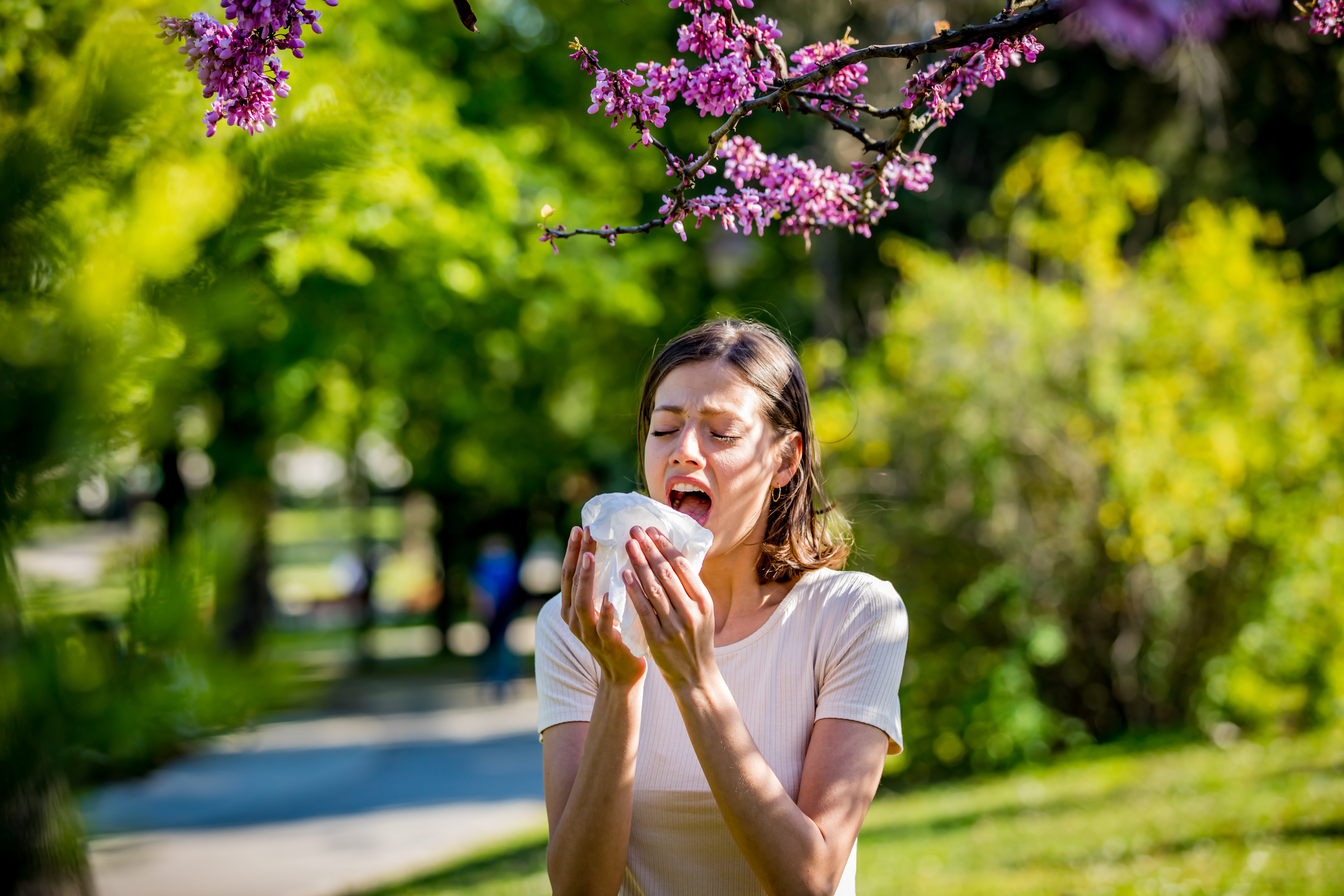
Join our commenting forum
Join thought-provoking conversations, follow other Independent readers and see their replies
Comments